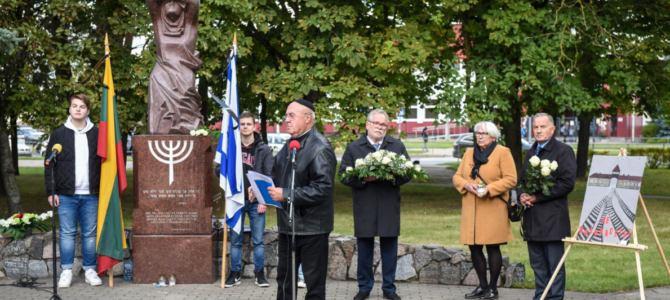“Today we remember those who were condemned to death by spiritual darkness and insane brutality. When Lithuania lost her people, beloved and appreciated members of the community, noble people who created our cities and country. We lost helpless elderly and children who never had the chance to grow up. Realizing the horror of those days, we speak about it every year, in order to remember, so that oblivion will not cover up this tragedy. Let member protect us, let there be no tolerance for violence, let there only be space for violence left in the darkest pages of history,” deputy Panevėžys mayor Valdemaras Jakštas said at the “Sad Jewish Mother” statue there after he lay a wreath and lit candles to mark the Day of Remembrance of Lithuanian Jewish Victims of Genocide on September 23.
The Lithuanian parliament established September 23 as the Day of Remembrance of Lithuanian Jewish Victims of Genocide in 1994. The date was chosen as the symbolic day the Vilnius ghetto was liquidated in 1943 with some victims sent to be shot at Ponar and others sent to concentration camps in Estonia and elsewhere, although the actual so-called liquidation took place over a period of weeks in Vilnius.
The smaller Panevėžys ghetto was liquidated earlier in mid-August, 1941, with 13,500 Jews there murdered, mainly by firing squad.
Before the Holocaust Jews occupied an important place in the life of the city of Panevėžys as public and political figures. At certain points in history Jews constituted over half of the city’s population. In the 1930s Jews accounted for about 35% of the populace.


